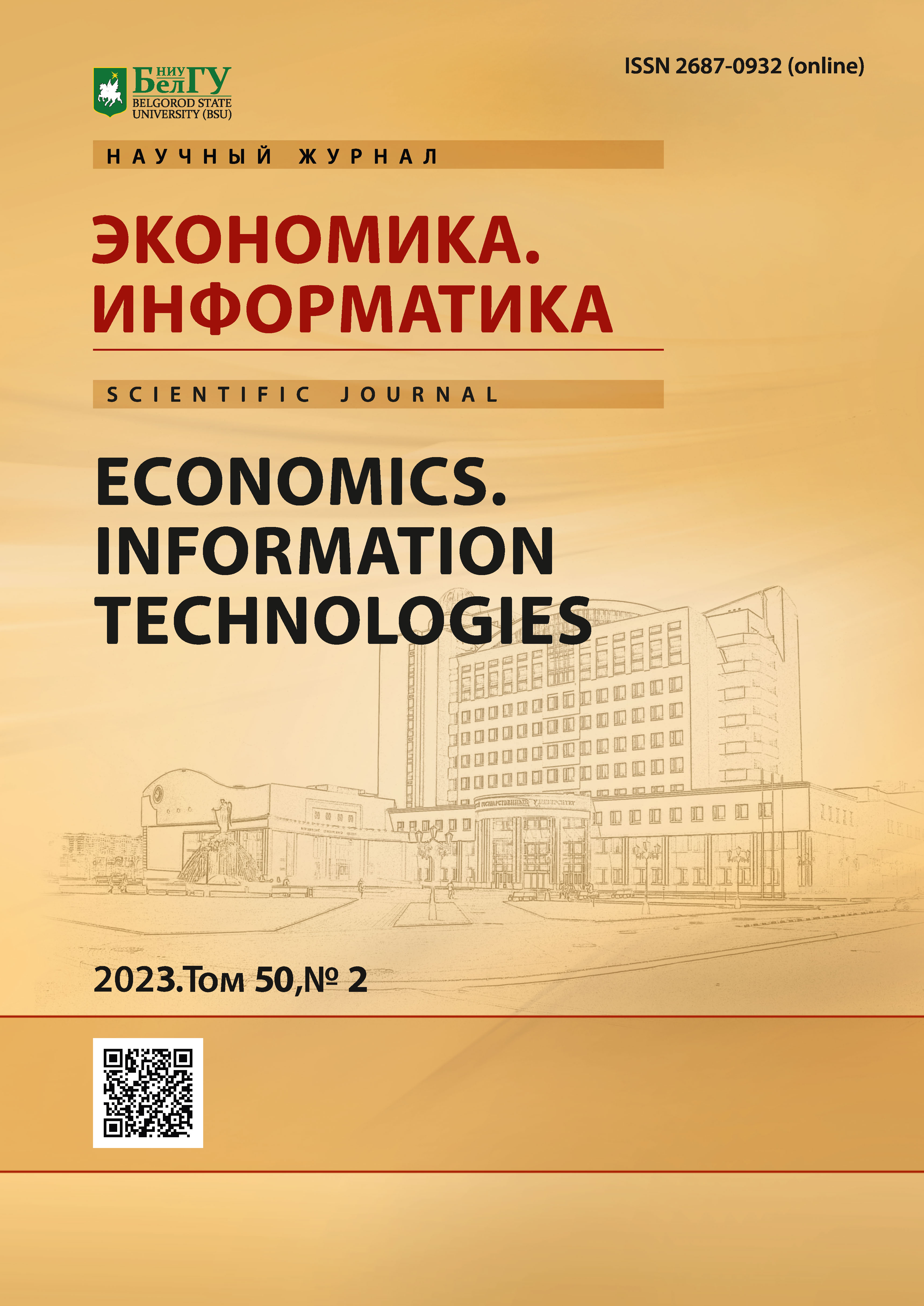Estimation Non-Elementary Linear Regressions Parameters Using Ordinary Least Squares Method
DOI:
https://doi.org/10.52575/2687-0932-2023-50-2-367-379Keywords:
non-elementary linear regression, binary operation, ordinary least squares, numerical estimation, software, multicollinearity, interpretation, rail freightAbstract
This article is devoted to the problem of non-elementary linear regressions estimation by the ordinary least squares method. Their generalization is proposed - non-elementary linear regressions with a linear argument in a binary operation. Three types of non-elementary linear regressions are considered - with arbitrary slopes in binary operations, with unit slopes and arbitrary free terms, and with arbitrary slopes and free terms. For each type, a numerical estimation algorithm is proposed. Based on the algorithms, a program for the numerical estimation of non-elementary linear regressions by the ordinary least squares method (NEELIN) was developed. The algorithm of the program operation, in which the parameters of the models are stored in the form of a three-dimensional data array, is considered. It is shown how to set the model structure in NEELIN. With the help of the NEELIN program, modeling of rail freight traffic in the Republic of Bashkortostan was carried out. The resulting non-elementary linear regression proved to be better in quality than the models generated by traditional tools.
Downloads
References
Базилевский М.П. 2020. Оценивание линейно-неэлементарных регрессионных моделей с помощью метода наименьших квадратов. Моделирование, оптимизация и информационные технологии, 8, 4 (31). https://doi.org/10.26102/2310-6018/2020.31.4.026
Базилевский М.П. 2021. Отбор информативных операций при построении линейно-неэлементарных регрессионных моделей. International Journal of Open Information Technologies, 9 (5): 30–35.
Базилевский М.П. 2022. Метод построения неэлементарных линейных регрессий на основе аппарата математического программирования. Проблемы управления, 4: 3–14. https://doi.org/10.25728/pu.2022.4.1
Базилевский М.П. 2022. Оценка методом наименьших квадратов простейших неэлементарных линейных регрессий с линейным аргументом в бинарной операции. Вестник кибернетики, 4 (48): 69–76.
Базилевский М.П. 2022. Построение вполне интерпретируемых неэлементарных линейных регрессионных моделей. Вестник Югорского государственного университета, 4 (67): 105–114.
Базилевский М.П., Носков С.И. 2017. Формализация задачи построения линейно-мультипликативной регрессии в виде задачи частично-булевого линейного программирования. Современные технологии. Системный анализ. Моделирование, 3 (55): 101–105.
Дегтярев А.Н. 2020. Анализ современного состояния развития промышленности и нефтедобычи в Республике Башкортостан. Научные труды Вольного экономического общества России, 223 (3): 432–444.
Клейнер Г.Б. 1986. Производственные функции: Теория, методы, применение. Москва, Финансы и статистика, 239 с.
Муратов Р.Х., Дегтярев А.Н. 2021. Условия экономического роста в модели инновационного развития региона (на материалах Республики Башкортостан). Уфимский гуманитарный научный форум, 2 (6): 10–18.
Носков С.И., Хоняков А.А. 2019. Программный комплекс построения некоторых типов кусочно-линейных регрессий. Информационные технологии и математическое моделирование в управлении сложными системами, 3 (4): 47–55.
Du M., Liu N., Hu X. 2019. Techniques for interpretable machine learning. Communications of the ACM, 63 (1): 68-77. https://doi.org/10.1145/3359786
Gao F., Yang L., Han C., Tang J., Li Z. 2022. A network-distance-based geographically weighted regression model to examine spatiotemporal effects of station-level built environments on metro ridership. Journal of Transport Geography, 105: 103472. https://doi.org/10.1016/j.jtrangeo.2022.103472
Gelman A., Hill J., Vehtari A. 2020. Regression and other stories. Cambridge University Press.
Karakurt I., Aydin G. 2023. Development of regression models to forecast the CO2 emissions from fossil fuels in the BRICS and MINT countries. Energy, 263: 125650. https://doi.org/10.1016/j.energy.2022.125650
Keith T.Z. 2019. Multiple regression and beyond: An introduction to multiple regression and structural equation modeling. Routledge.
Letzgus S., Wagner P., Lederer J., Samek W., Müller K.R., Montavon G. 2022. Toward explainable artificial intelligence for regression models: A methodological perspective. IEEE Signal Processing Magazine, 39 (4): 40-58. https://doi.org/10.1109/MSP.2022.3153277
Luo J., Hong T., Gao Z., Fang S.C. 2022. A robust support vector regression model for electric load forecasting. International Journal of Forecasting. https://doi.org/10.1016/j.ijforecast.2022.04.001
Molnar C. 2020. Interpretable machine learning. Lulu. com.
Tian M., Guo F., Niu R. 2022. Risk spillover analysis of China’s financial sectors based on a new GARCH copula quantile regression model. The North American Journal of Economics and Finance, 63: 101817. https://doi.org/10.1016/j.najef.2022.101817
Wang P., Chen S., Yang S. 2022. Recent advances on penalized regression models for biological data. Mathematics, 10 (19): 3695. https://doi.org/10.3390/math10193695
Abstract views: 249
Share
Published
How to Cite
Issue
Section

This work is licensed under a Creative Commons Attribution 4.0 International License.


